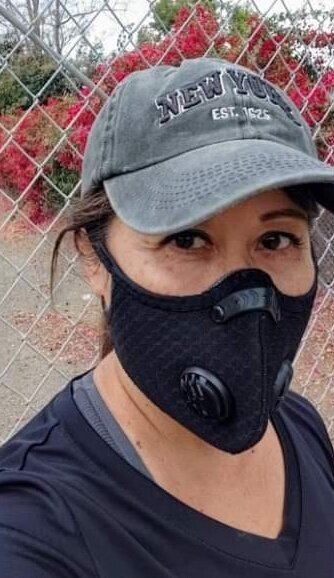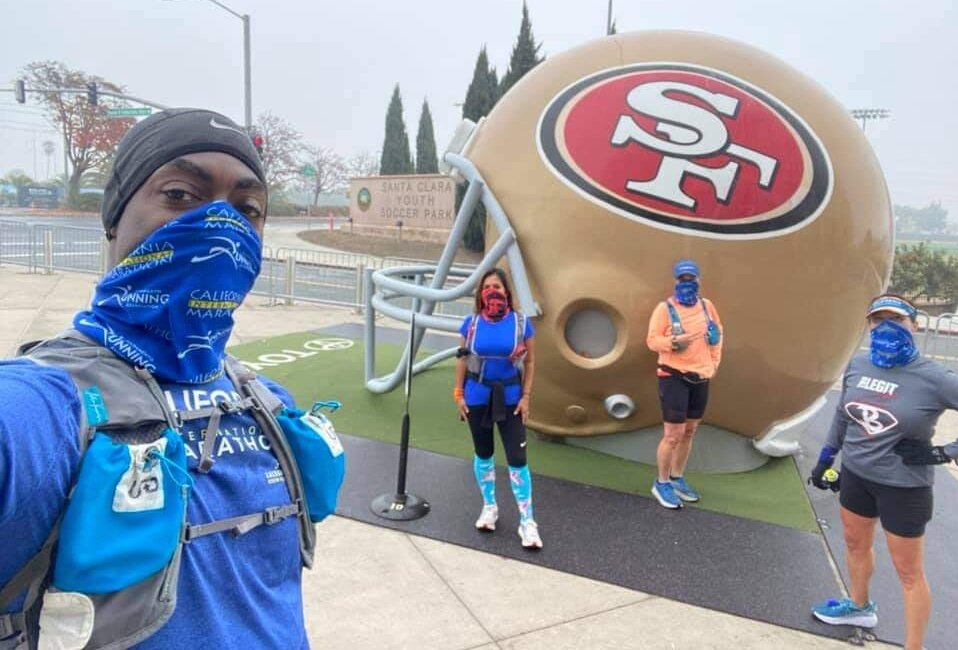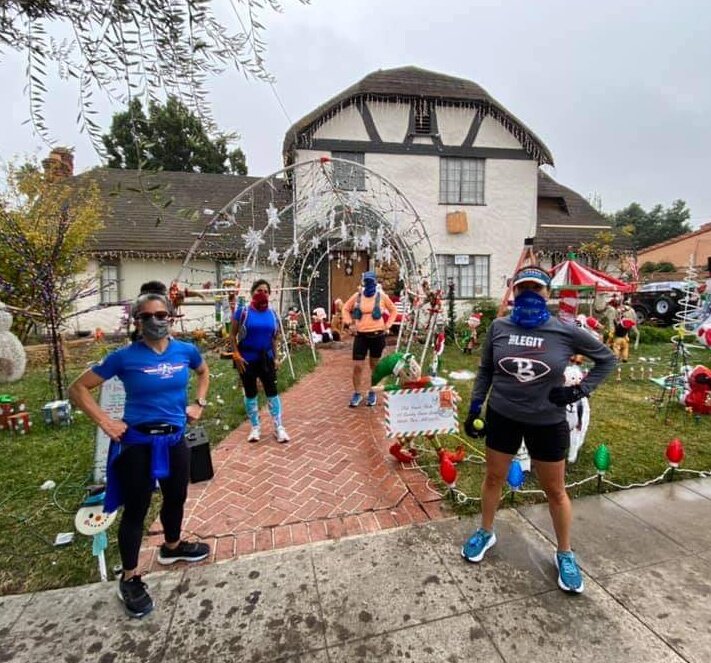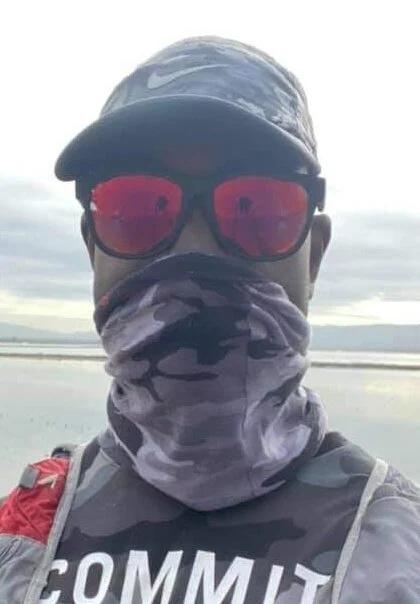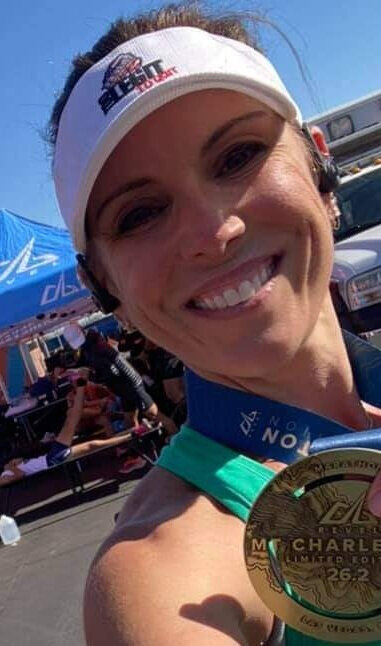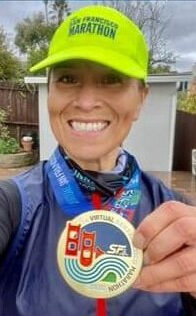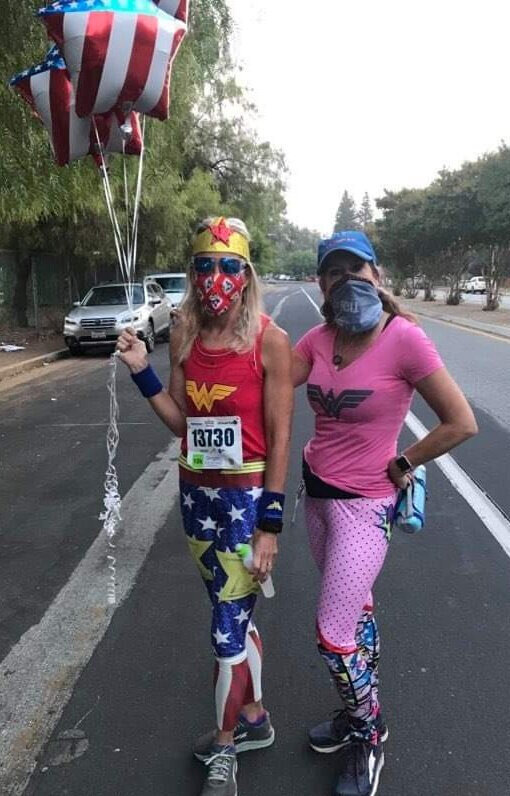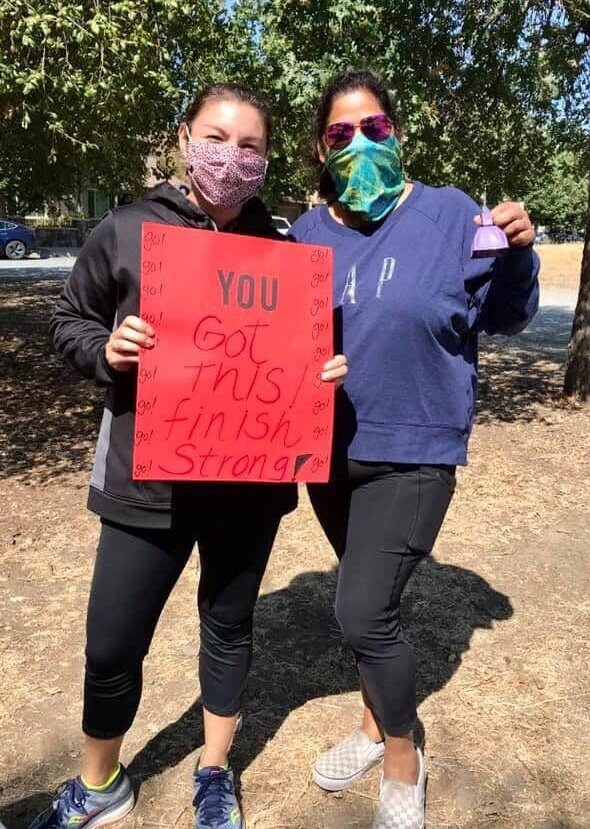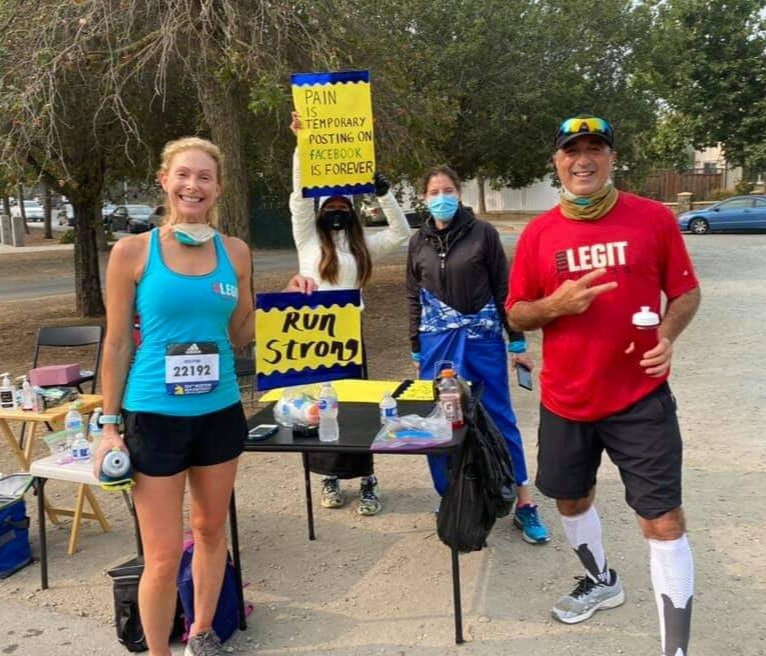Virtually Stuck in Reverse
By Barbara Zirl
After you’ve crossed the finish line, bored your friends and family with stories of your race glory or defeat, treated your aching muscles to an ice bath or foam roll, started a few tentative walking laps around the lake, and finally hung up your shining medal on a door handle, you start to think about the next race. What’s ahead? A reverse taper, for one thing. It sounds like some ice skating move where you glide backward and then spin and leap in the air. It’s not that.
When you train for a long-distance race, you build up your endurance and mileage over the weeks leading up to a race, with the goal of reaching peak fitness three weeks before the big day. Then you gradually decrease your daily and weekly running totals, tapering your training so by race day, all the metabolic changes you’ve been working on improving take hold and your body is sufficiently rested and ready to race. Once you’ve achieved your race goal, there’s a recovery period, where your body thanks you for not running – a forced hiatus.
This time though, I haven’t been racing. The Covid-19 pandemic took care of that. There are no races on the calendar that haven’t been cancelled or postponed or turned into some “virtual” race, where you register for a “race” but are actually just running the distance on your own. You may simply record your race time on the honor system. Or your self-timed miles are tracked via your GPS watch and an app like Strava and show up on a race leaderboard on the race’s app. It’s all digital and “virtual.” You get your t-shirt, bib, and race medal in the mail and share your “race day” photos on social media with the race’s hashtag. Of course, you can run without signing up and your bandit “race” results don’t really count except as knowledge of your personal achievement. For that effort, you get a pat on the back. But don’t touch, because there’s a pandemic. For something termed “virtual” these races are rather unreal or even surreal and not actual at all.
“Virtual: very close to being something without actually being it.”
If you look up Merriam-Webster’s definition of virtual, it says: “very close to being something without actually being it.” Recently, a friend posted on Facebook that her new candidate for the most hated word of 2020 was “pod.” I replied, “Pod is a close second. But I’m sticking with ‘virtual’ as my most hated.” She said, “Virtual is definitely up there, especially when it comes to racing. It’s not a race if it’s virtual. It’s just, uh, running.”
“It’s not a race if it’s virtual. It’s just, uh, running.”
True. It’s not legit. In other words, it’s almost racing.
“Almost” only counts in horseshoes. I sign up for races to run somewhere new, challenge myself side-by-side with other runners and to have an experience, complete with the excitement of being in a crowd of people who share the same enthusiasm. I refuse to pay a race fee only to run a race distance on the same trail I run on every day. Plus, I’ve already lost plenty of money from the races I signed up for a year ago, that aren’t happening now and may not even happen a year from now. Without a goal race on my calendar, I’m unmoored and horizon-less, navigating through the endless blur of days
I’m impressed – and a bit envious – with friends who are weathering the adversity like champs, setting virtual race personal records (I’m calling them VRPRs with an asterisk next to them because they don’t really count) as they tackle everything from the Virtual Boston Marathon Challenge, to completing bucket list events like the Tokyo, London, Berlin, Chicago and New York City marathons, to finishing The Big Surreal Virtual Challenge, where you could run distances of 5K, 12K, 11 miles, 21 miles and 26.2 miles. The more races you completed, the more prizes and swag you earned. You could virtually run 600 miles across Tennessee, or 700 miles from Malibu to Tahoe, or 500 miles along the Pacific coast.
I actually did The California Coast 500 Challenge, virtually running from Santa Monica to San Francisco. I had from June to September to complete it, but I finished in just two months, coming in 52nd place out of some 2,000+ competitors, and among the top 5 women on my team from my running group. I was sad when it ended early for me. I had nothing concrete on my calendar after the challenge.
The forced gap in running over the summer was not even in-between real races or virtual races – it came from the impossible-to-breathe air, with wild fires as far north as Oregon and Washington and as far south as Los Angeles. In San Jose, in the middle of Silicon Valley, we got the brunt of the poor air quality for weeks as the wind shifted. The atmosphere was red and smoky giving the sky an eerie Mars-like appearance. It felt like doom – the apocalypse of our disintegrating world. The masks we were already wearing to protect us from giving or getting Covid-19 doubled as air filters from the smoke.
Each day I checked the air quality – as obsessively as I would check the weather leading up to a race. Finally it was in the green zone: breathable air. The sky cleared to blue, with wisps of white clouds. The temperature dropped to a comfortable level. And finally, I could return to running, employing my reverse taper technique that always served me well in the past: running a few easy miles each day, adding miles until I could return to my daily distance routine and look forward to a goal date on my calendar.
Only, it wasn’t working. I stalled at 5 miles. 6.2 miles. 7 miles. Then, it got hot again or maybe I didn’t get up early enough to run before the temperature soared. I walked instead. The next day, the smoke was back and I stayed indoors. The pattern repeated: three steps forward, two steps back. I was virtually stuck in reverse, spinning my wheels like Joe Pesci in My Cousin Vinny, where his red Cadillac is parked in a muddy Alabama field and he steps on the gas to back up but the rear left tire spins in the mud and the right one does nothin’. Just like that. I was literally getting nowhere. I was the runner version of Sisyphus rolling the boulder up the hill only to have it roll back down and start again.
Last December, after I’d run the California International Marathon (CIM), I signed up immediately for this year’s race because you can register early with the lowest race fee. At the beginning of the pandemic and shutdown, it seemed fall races might be impervious to cancellation. That proved untrue as case numbers rose. I’d been following my CIM marathon training schedule starting in June, plugging away at my weekend long runs and trying to maintain my workout schedule. In the middle of training, the race organizers finally got around to announcing the cancellation – even though we all knew it would be cancelled. No refund. No alternative date this year. Just another 26.2 mile virtual challenge (plus another fee to participate). So my training fell apart and I struggled to find motivation. I was still running, but not sticking to a long-run schedule and certainly not training religiously enough for a marathon like I normally would if there were an actual one on my calendar. A few team members ran a pseudo CIM on the same day the race would have been held. My heart wasn’t in it and I was untrained. I just ran 10 miles that day, cheering on the virtual runners. Or were they actual runners?
Some team members have been seeking out small live races in other states like Nevada and Arizona. Mostly these are trail races, with limited amounts of participants and an elaborate system of staggered race starts and social distancing arrangements so you can get to the starting line safely. But you can’t stand next to your fellow runners. You can’t touch anything. Can anyone even watch? While these may retain the semblance of live racing, for me, they lack the appeal, ambience and excitement of the kind of races I enjoy, so I’m staying away.
Race organizers are working hard to keep up morale and encourage runners to keep participating. They tack the word “virtual” on their race name and offer lots of race swag: a water bottle, a sweat shirt with matching face mask, a neck gaiter, a carryall bag. Do you do the virtual event for the running experience or the goodie bag?
My super-motivated friends are completing one virtual challenge after another: the Virtual Silicon Valley Half; the Virtual CIM in the rain; the Virtual Hot Chocolate 15K/5K; or even a virtual half Ironman -- Pelaton-spinning 56 miles in their garage, swimming 1.2 miles in their bathtub, and running 13.1 miles in laps around their kitchen island. OK, that last one I made up! Still, I’m tired of pretending virtual racing is something or that I can pull motivation out of a hat with a finger snap.
But I need to regain some motivation and move forward. I need to shift into a different gear and get unstuck from reverse. I don’t know if a firm New Year’s resolution to run more would do the trick. I need a goal to keep me going.
So, I signed up for Taji 100, which will take place starting February 1, 2021. Taji 100 is the precursor to all the pop-up virtual races that are simply place holders until the pandemic ends. It’s already a virtual challenge in which you commit to log 100 miles walking, jogging, running, or hiking during the 28 days of February, and the “race” proceeds go towards health and fitness programs to support American military service men and women. The well-organized “event” fosters athletic motivation and camaraderie, with built-in incentives like achievement badges for running before dawn or after midnight or on holidays, and friendly competition between teams. Plus, it’s a good cause. I’ve participated two years in a row, challenging myself to log as many miles as I could. Both years I ran 300 miles in 28 days. Could I do it again?
Until then, I’m just trying to get in some running each day to maintain my fitness, slowing building my miles back up to where they should be. Almost. But not quite yet.





